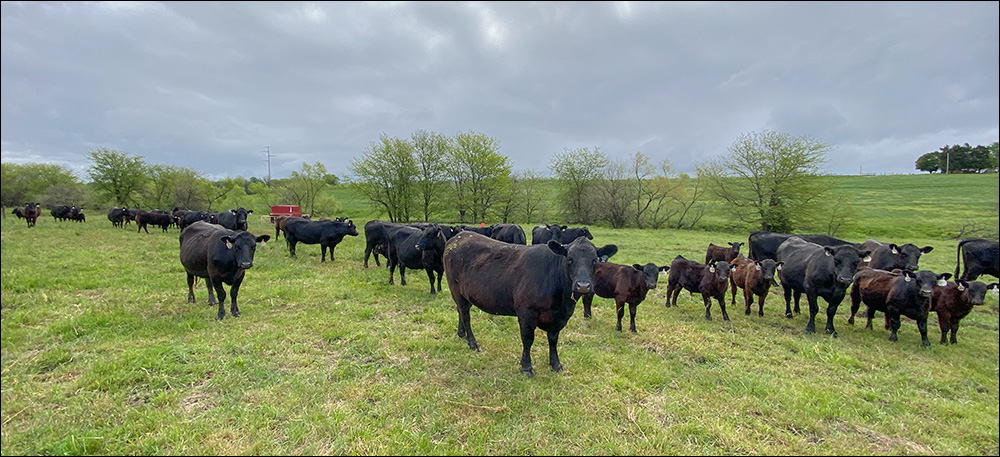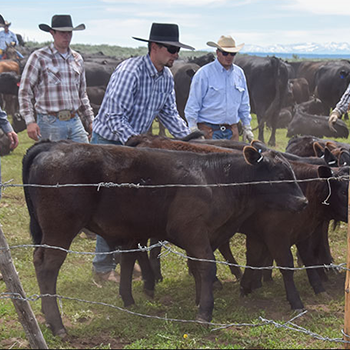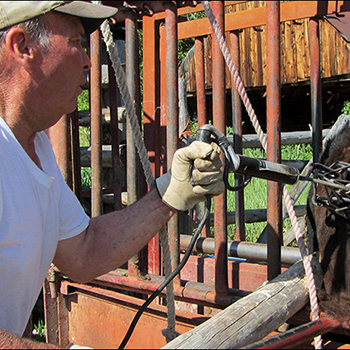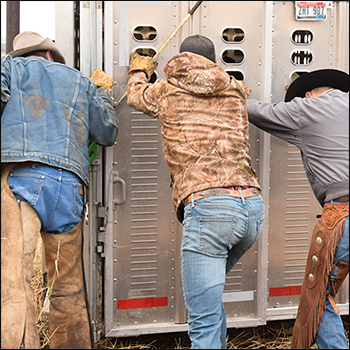
Cut Cattle Feed Costs; Don’t Cut Corners
Maximize efficiency and minimize waste to help cut feed costs without affecting production.
Whether you’re in an area suffering from drought or not, cattle feed cost is the single largest expense in the cow-calf sector, and prices are still on the rise. Although the future looks strong, with a recent CattleFax report predicting the gap between calf prices and cash cow costs to narrow in 2022, the current situation has producers asking, “Where can I cut?”
“Decisions made today can affect calf weaning weights this year, how quick a cow will rebreed and calve next year, and even the weight of her next year’s calf,” reminds N.T. Cosby, senior consulting nutritionist with Purina Animal Nutrition. “Producers looking for cost savings should choose strategies to save money now, without losing advantage in strong markets later.”
“Utilizing tactics to cut waste and inefficiencies when feeding cattle can have an impact on an operation’s bottom line,” says Cosby. “The goal is to cut costs without sacrificing performance.”
Explore management strategies to help reduce cattle feed costs:
1. Maximize stored cattle feed
When cattle feed is not stored properly, it loses volume and nutritional value. Avoid shrink loss and packing issues by harvesting haylage and silage at the right moisture level. Ensure proper fermentation by storing in an anaerobic environment and utilizing inoculants.
Inside storage for hay is ideal, but when not feasible, store on a surface that allows for drainage, such as gravel, tires or railroad ties, to keep the underside of bales dry. Proper spacing between bales allows air movement and improves drying when the weather does affect bales.
Be aware of storing timelines when feeding wet byproducts. Distillers’ grains and gluten must be fed within four days in summer and within a week in winter.
2. Take advantage of grazing opportunities
In areas with available pastures, a strategic grazing program can help increase your operation’s carrying capacity, extend grazing days and reduce dependence on harvested and stored feed.
Design a grazing program to make the most of your available forages with these tips in mind.
- Grazing programs can include strategic fencing, water placement, herding, pasture rotation and rest, forage species variation and more.
- Consider strip-grazing crop aftermath, like cornstalks.
- Encourage cattle grazing in underutilized pasture by limiting them to certain pasture sections and slowly adding and removing sections over time.
- Supplements such as blocks, protein tubs or liquid supplements can promote grazing in underused pasture or range areas, potentially increasing grazing days.
3. Monitor mineral intake
“A well-balanced mineral supplement is the cornerstone of a nutrition program that can impact reproduction, health, longevity, soundness and efficient energy utilization,” Cosby emphasizes.
The biggest factor affecting mineral cost is consistent intake.
“If a mineral isn’t being consumed, the rancher has paid for something that is giving no return,” says Cosby. “If the mineral is overconsumed, the cost per day may exceed the value returned.”
Monitor mineral intake and adjust the number of mineral feeders and the location of feeding stations to achieve your goal for consumption rate.
4. Avoid hay waste
According to the University of Nebraska, feeding hay to cattle with 24-hour free-choice access can result in 25%-45% hay waste due to sorting, trampling and soiling the hay. Feeding hay in smaller amounts and in well-drained areas can reduce waste. Also, research the most efficient hay rings or use “hay traps” that reduce access time. Operations in drier climates or range settings may consider unrolling hay or processed forages.
“The cow-calf business is more of a marathon than a sprint,” shares Cosby. “Cutting extra input costs from waste and inefficiency can allow you to make your feed dollars work harder now and keep your operation on track for long-term goals.”
Editor’s note: Wyatt Bechtel is a manager for Filament. Photo by Kasey Brown.







